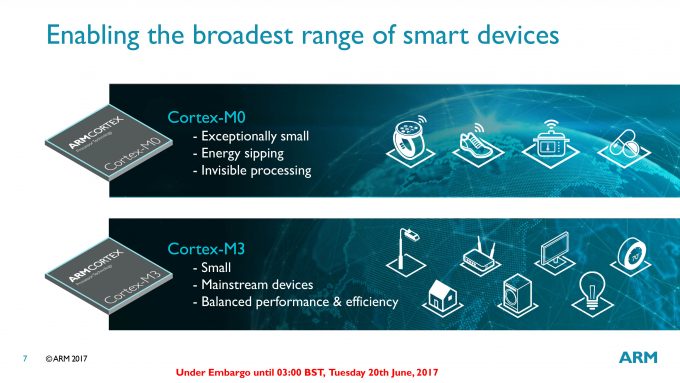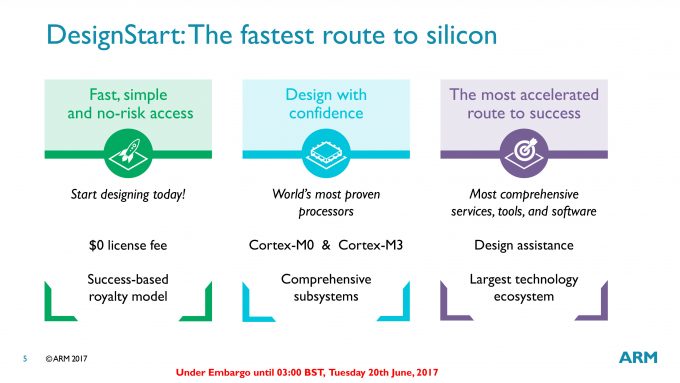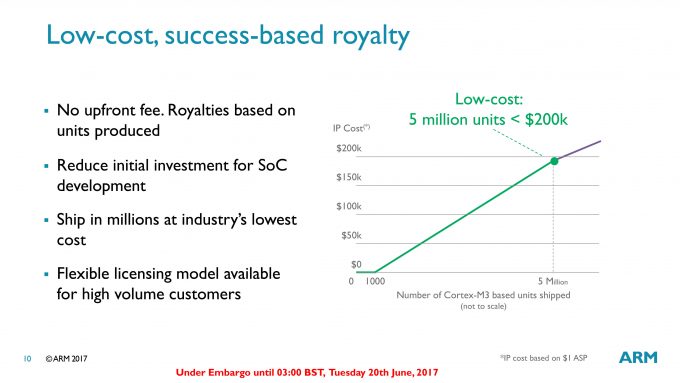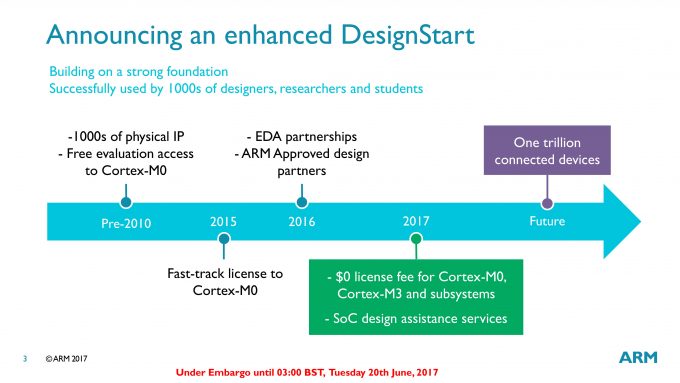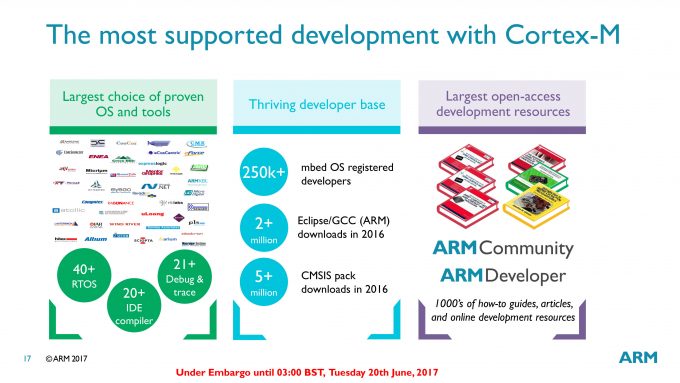- Qualcomm Launches Snapdragon 4 Gen 2 Mobile Platform
- AMD Launches Ryzen PRO 7000 Series Mobile & Desktop Platform
- Intel Launches Sleek Single-Slot Arc Pro A60 Workstation Graphics Card
- NVIDIA Announces Latest Ada Lovelace Additions: GeForce RTX 4060 Ti & RTX 4060
- Maxon Redshift With AMD Radeon GPU Rendering Support Now Available
ARM Paves Way For IoT Revolution With Free Access To DesignStart & Cortex M0, M3 CPUs
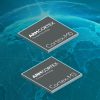
With the saturation of the smartphone market, ARM is looking to the next disruptive business, connecting everything online though the ‘Internet of Things’. ARM’s ambitions have led it to lower the cost of entry to SoC design by opening up access to its Cortex M3 CPUs, and removing up-front license fees. Is this ARM’s path to a trillion connected devices?
ARM is a company that should need little introduction. Its Cortex A-series CPU architecture is now as synonymous with smartphones and low-power mobile devices as Intel is with x86 desktops, servers and laptops.
However, a new wave of electronics and purpose-built devices have been spreading in the last couple of years, summed up more as a term rather than as a specific device: Internet of Things (IoT).
Spurred on by a ‘maker’ generation using Atmel microcontrollers that powered Arduinos, and ARM architecture that went into the Broadcom chips used in Raspberry Pis.
Making small, specific devices for otherwise mundane tasks, then connecting them all together and making them controllable through the Internet, has created a new industry set out to connect all devices together.
From video door bells, garage door remotes, and mood lighting, fridges that show you what you have in stock, to sensor hubs used in drones and automation; even that fitness tracker keeps tabs on your health, where you’ve been, and how well you are sleeping. All of these seemingly unrelated devices are what make up the IoT revolution.
Startups have been cropping up left and right, with small venture capital investments from friends and family, to crowd-sourced funding from the likes of Kickstarter. Pretty much anyone with some rudimentary electronics knowledge and some programming skills is capable of creating the next ‘big thing’. Going from an Arduino and sensors hooked up to a Raspberry Pi, connected to some cloud compute service, is not an elegant solution, nor is it commercially viable. Consolidating processes, parts, and software, into a neat little package is often the end goal, but getting there can be tricky. It’s at this point the terms ASIC, Application Specific Integrated Circuit, and SoC, System on Chip, are introduced.
Building a board with a microcontroller, CPU, flash memory or RAM, power management and sensor logic, was the old way of doing things. IoT demands compact solutions and low-cost, capable of being integrated into millions of devices. Building an SoC or ASIC solution is no small feat, often relegated to only the largest of design teams, but ARM is slowly changing that perception with its DesignStart system and Cortex-M0 and M3 processors.
If you cut through a lot of the marketing statements and huge numbers, what ARM plans to do is ambitious, and something that is likely to speed up adoption of not just ARM IP, but also IoT devices. There are three key points being laid out by ARM with this announcement.
- Significantly reduce the cost of entry by removing fixed IP fees and using a success-based royalty system.
- Provide assistance in designing SoCs through DesignStart and IoT devices through mbed.
- Building a community to further speed up the design process.
The first point really is the headline here, zero up-front costs when designing and building systems around ARM’s Cortex-M0 and Cortex-M3 processors. These CPUs may not be as well-known as the A-series found in smartphones, but they are extremely prevalent in other devices, with ARM proclaiming over 20 billion devices. The smaller M0 is for low-power devices that last for years on a single battery if need be, things like Fitbits, radio controllers, remotes, etc. M3 is the more mainstream part and is used in toys, thermostats, network gear and other IoT devices.
The success-based royalty system means that if you ship just 1000 units, there is basically no costs involved in royalties, so those risky startups won’t have to worry about much in the way of licensing. However, even if you end up with an incredibly successful product, the licensing costs are just under $200K for 5 million units, or put another way, $0.04 per chip.
The second point is about speeding up the design process and simplifying the minefield that is IP management. DesignStart is meant to be a package that allows you to integrate the different ARM and partner IP together, build up your system, simulate the processor, fine tune on an FPGA, and then ultimately ship the final silicon. DesignStart Eval is the basic package that lets anyone take a look at building their own ARM processor, built around the M0 and M3 processors, with only a simple EULA to agree to. DesignStart Pro is for commercial SoC design and licensing.
DesignStart isn’t just about the hardware and silicon, it’s also about software integration. M3 processors have their own OS which you can run, called mbed, and it’s an OS built specifically for the IoT platform. It provides many of the software libraries needed to communicate with different devices, even across mesh networks if need be. What ARM stressed as critical too, is a central platform with which to manage the security of the device, one that provides a means with which to patch vulnerabilities. You don’t need to look around online for long before stumbling across the dangers of insecure IoT devices (baby monitors spring to mind).
The third key point is something most development and design systems push, and that’s the community. DesignStart opens up access to a wealth of tools as well as access to ARM’s forums with which to ask questions of the community. mbed OS has 250K developers registered, there are 20 IDE compilers for M-series CPUs, 1000s of guides, books and online resources, and if all of that is still not enough, or the whole system is a bit overwhelming, you can get ARM to put you in touch with a suitable design studio that’ll build the chip for you; studios audited by ARM.
When SoftBank acquired ARM last year, one of the key decisions for the purchase was building up a platform to spearhead the IoT revolution. This opening up of the M-series platform is the first step on the path to 1 trillion connected devices, and one step that is sure to be followed by many more. We’ll be keeping an eye on ARM with great interest going forward.
Support our efforts! With ad revenue at an all-time low for written websites, we're relying more than ever on reader support to help us continue putting so much effort into this type of content. You can support us by becoming a Patron, or by using our Amazon shopping affiliate links listed through our articles. Thanks for your support!




